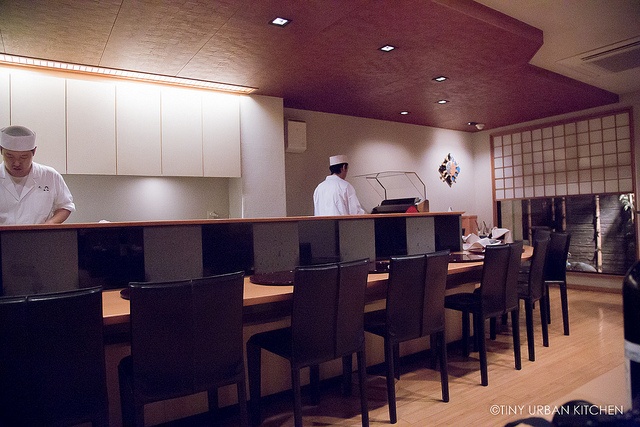 This is the eighth post in the Tokyo - Kyoto - Osaka series. Other posts in this series include the intro post: Tokyo, Kyoto, and Osaka, Matsugen (soba), Sushi Iwa, Ramen Honda (Tokyo Ramen Street), Ryugin, Omen (udon), Shouraian (tofu), and Dotonbori in Osaka (street food).
This is the eighth post in the Tokyo - Kyoto - Osaka series. Other posts in this series include the intro post: Tokyo, Kyoto, and Osaka, Matsugen (soba), Sushi Iwa, Ramen Honda (Tokyo Ramen Street), Ryugin, Omen (udon), Shouraian (tofu), and Dotonbori in Osaka (street food).
Osaka is a food lover's paradise.
The city itself boasts 120 Michelin Stars: four three-star Michelin restaurants, eight two-star Michelin restaurants, and a whopping seventy-six one-star Michelin restaurants. Even the normal casual restaurants are at another level, and the street food is fantastic.We visited Osaka twice during our short stay in Kyoto (yes, we actually took the train out to Osaka just for dinner!).
Our two meals were completely different. One night, we immersed ourselves in the bright lights and crazy crowds of Dotonbori, waiting in line for world famous okonomiyaki and chowing down on takoyaki in the street.The second night we visited Taian, a recently minted (2011) three-star Michelin restaurant that specializes in grilled food.
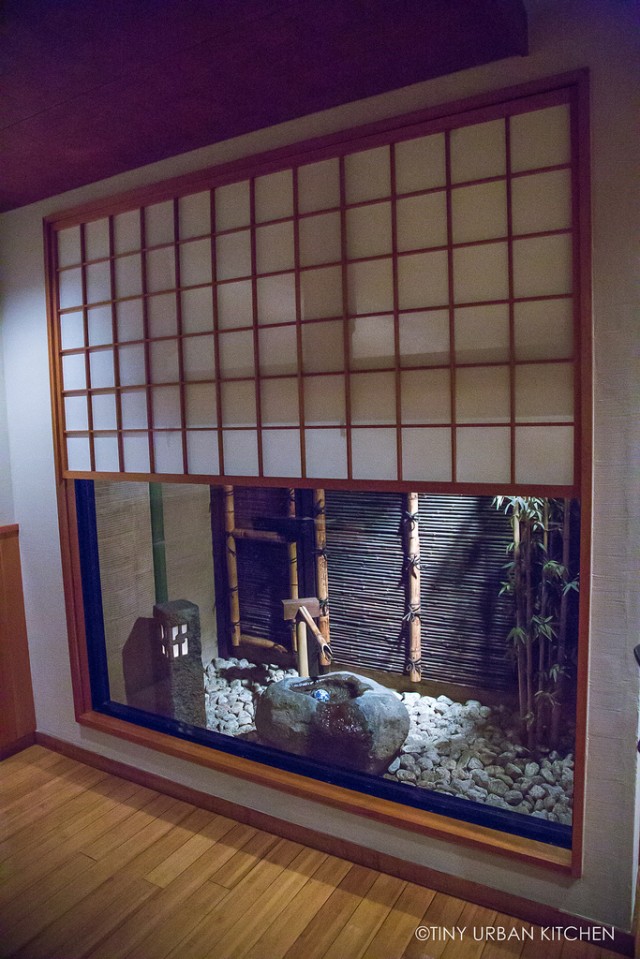
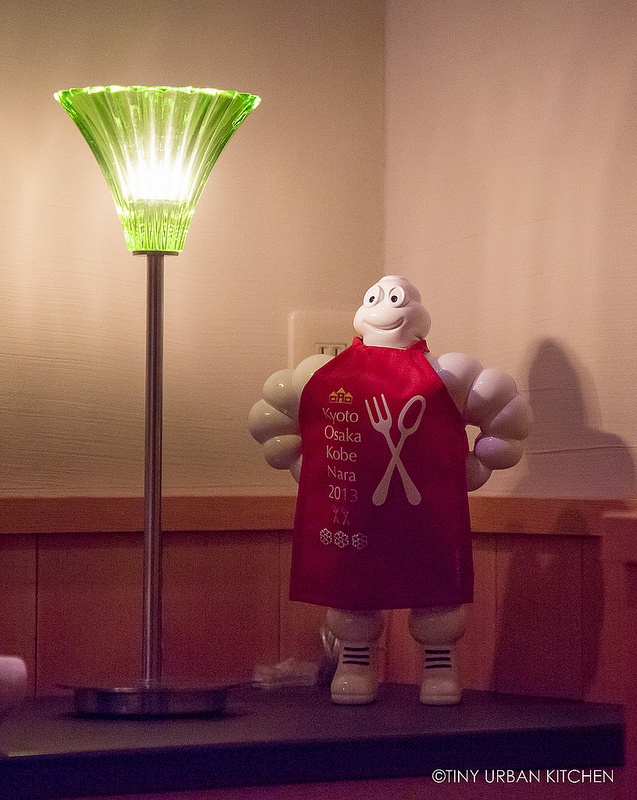
Everything from the zen garden outside the window, the impeccable service, and spectacular food (not to mention very, very reasonable prices), made this one of the best "bang-for-buck" three-star Michelin experiences I've ever had.
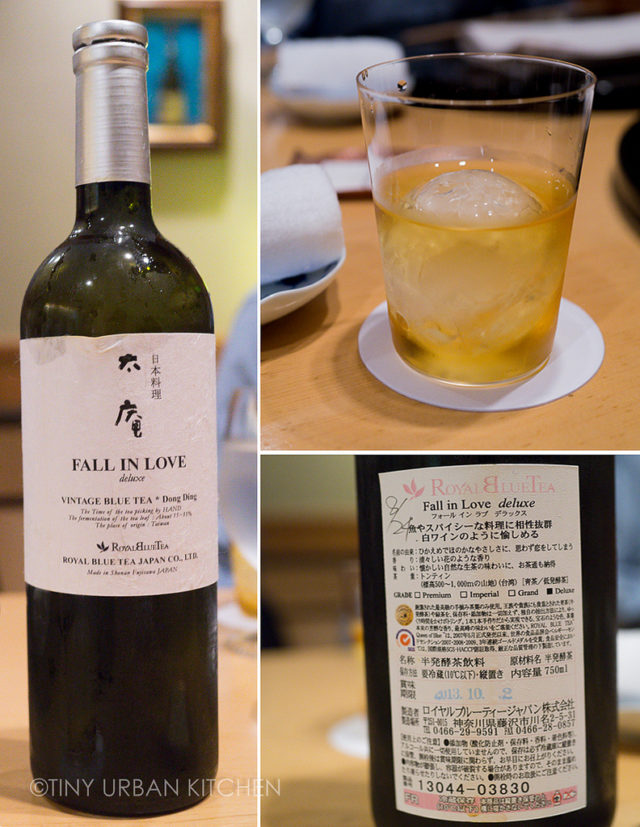
I started out by ordering the most unusual of teas. I didn't quite feel like alcohol, so I ordered one of their specialty teas called "Fall In Love". It was a "royal blue tea", something I had never heard of before. The tea arrived served like a cocktail, with a huge spherical ice ball. The bottle from which it was poured looked like a wine bottle.
It turns out that Royal Blue Tea comes from the Kanagawa Prefecture in Japan and is cold brewed for three to six days before being bottled. The plants are carefully cultivated by hand, fermented under tightly controlled conditions, and brewed with the same level of obsession that Westerners typically see in winemaking.
The tea was indeed beautiful and I was sad that my ice ball was so large - it meant I actually didn't have that much tea! Alas, I sipped slowly and carefully, savoring each and every golden drop. I loved how floral, fragrant, and smooth the tea was - strong, yet without a single hint of bitterness.
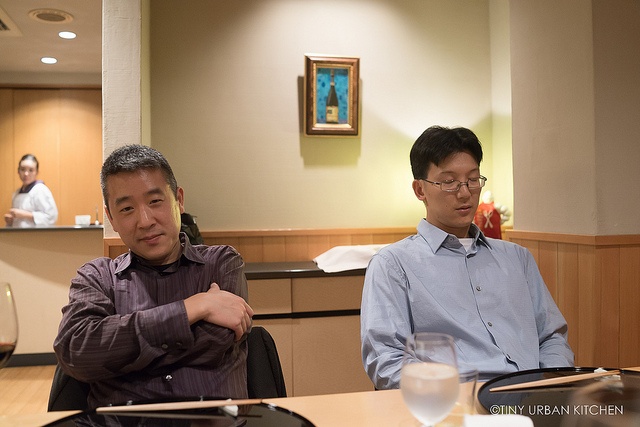
The menu at Taian is pretty straightforward. It's a set tasting menu but you do get to pick which grilled protein you want as your main dish. The basic price is 10,500 yen ($105 USD), with certain entrees (such as the Wagyu beef) costing extra (13650 yen, about $136.50 USD).
For the sake of variety, our table of four decided to order four different main dishes.
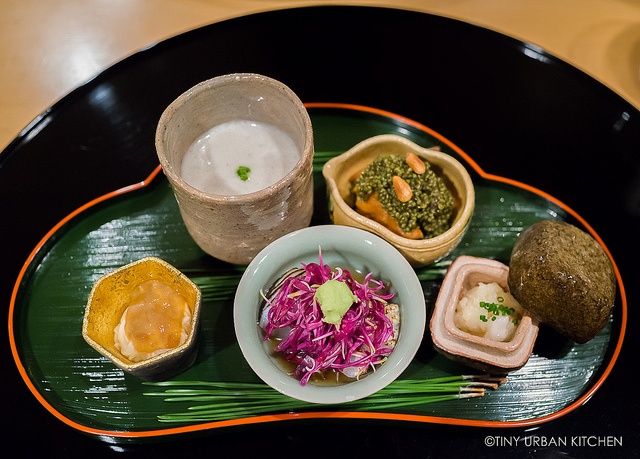
I loved this first set of mini dishes that we all got, each one unique in its own way. The focus is most certainly on local and seasonal vegetables, many of which are very different from what we see in the West. We were pleasantly surprised that the server spoke English and she took care to explain everything in English to us as well as she could.
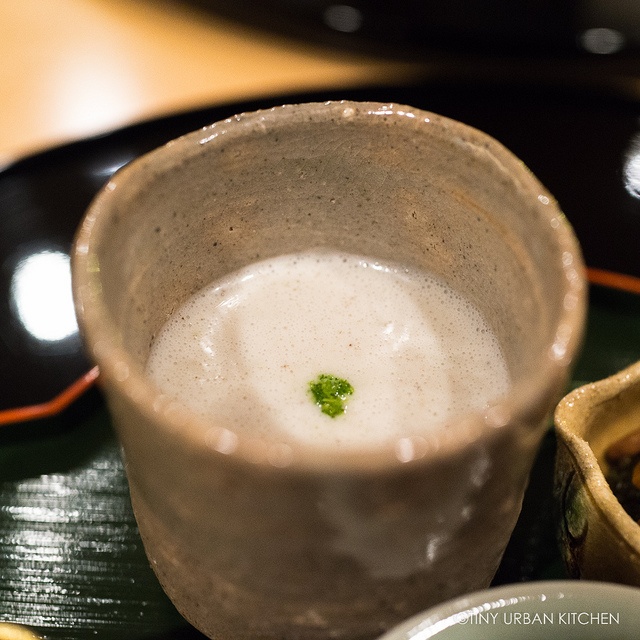
This Japanese Potato Soup was filled with some sort of white fish sashimi. It was beautifully velvety and smooth, and the flavors were beautiful, full of deep umami from the fish.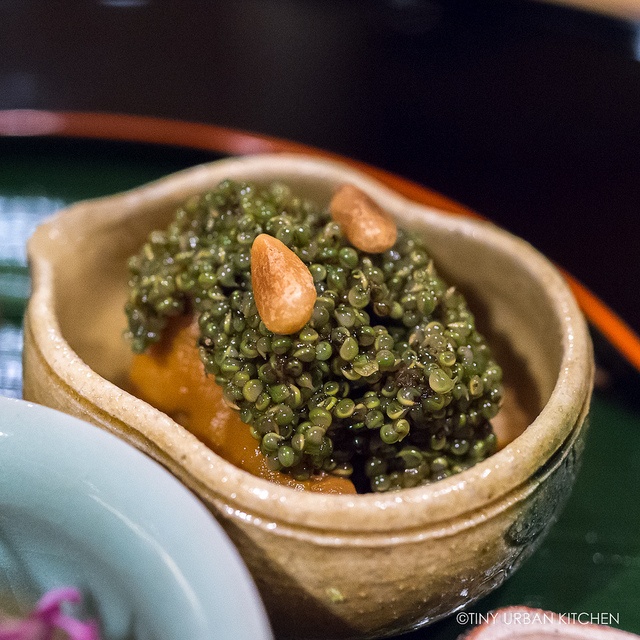
In this second dish, oyster mushrooms were topped with tonburi and toasted pine nuts. Tonburi is a seed that is often used in Japan as a food garnish. The texture sort of reminded me of quinoa. The server was so kind as to bring over a book with a picture of the plant (from which the seeds come) in order to explain to us what we were eating.
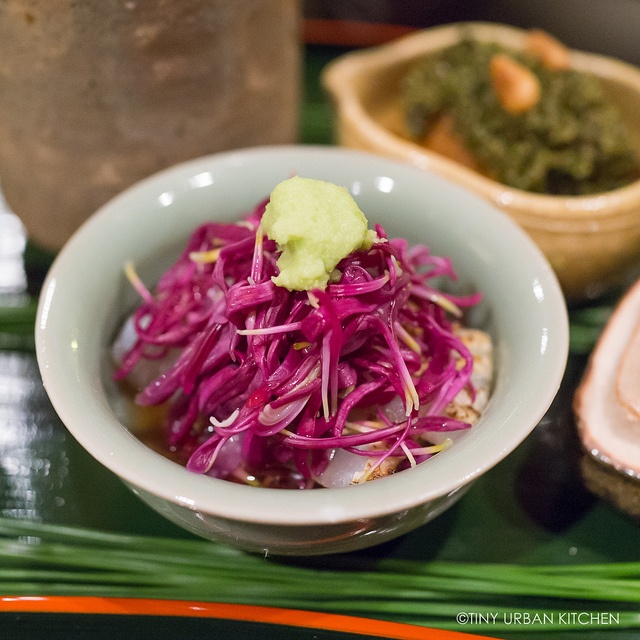
This next dish consisted of slices of barely seared raw fish topped with pickled "kiku" flower and freshly grated wasabi. Kiku is the Japanese word for chrysanthamum. This was delicious as well.
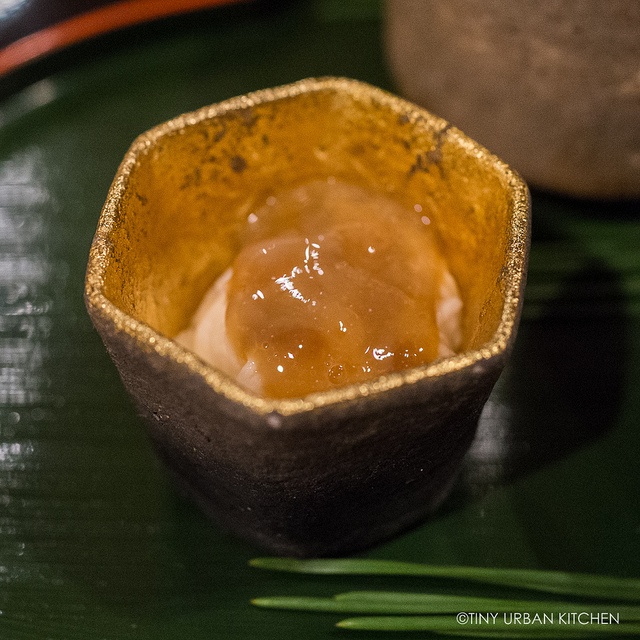
This next dish consisted of sea cucumber and mountain yam. If you've never had mountain yam (yamaimo) before, it's sort of an acquired texture. It's sticky and gooey, kind of like the inside of okra. Here it's paired with sea cucumber, another gelatinous sea creature that's unusual for the Western palate. I happen to like both sea cucumber and mountain yam, so I was able to enjoy the lovely flavors of the dish without being distracted by the textures.
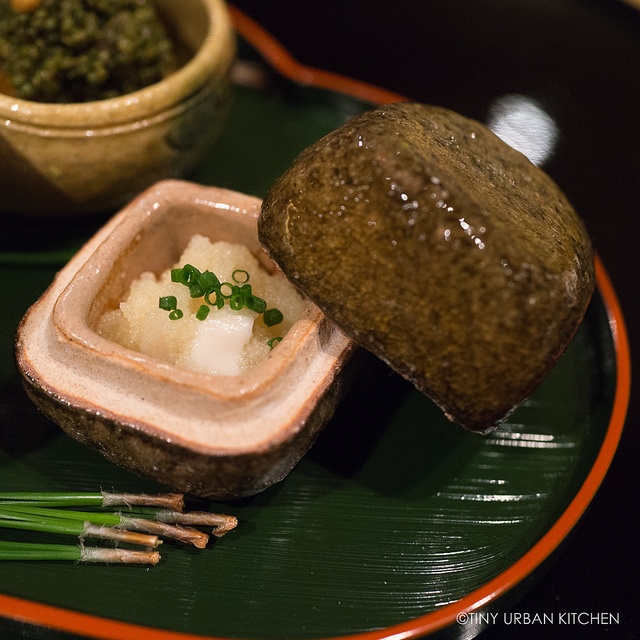
And finally the eggs of the Ayu, or sweetfish, came mixed together with salt duck eggs to form an extremely flavorful, umami-laden bite. This was yet another very locally inspired dish, since ayu is predominantly only eaten in Asia.

Our next course was a soup, and it was beautiful. It was full of matsutake mushrooms, which are always in season during the fall. The fragrant mushrooms gave the soup a beautiful earthy yet clean flavor that I love. There was one ginkgo egg dumpling with a bit of ginger.
Although I loved the soup, I felt a bit torn about this dish. I'm not positive if I heard the server right (since she did struggle sometimes with English), but I could have sworn she said it was a snapping turtle broth.
I grew up with a pet turtle (he's actually still alive - I think they live crazy long lives!), and I've never had the heart to eat turtle before, even though I'm a reasonably adventurous eater. I know it's not exactly rational, but it felt a bit sad and weird to think that I might be drinking turtle soup.
On the other hand, it's quite possible she said snapper, in which case I'd be totally fine.
Aside from my personal "issues", I actually objectively loved the soup and thought that the flavors were extremely sophisticated and perfectly balanced.
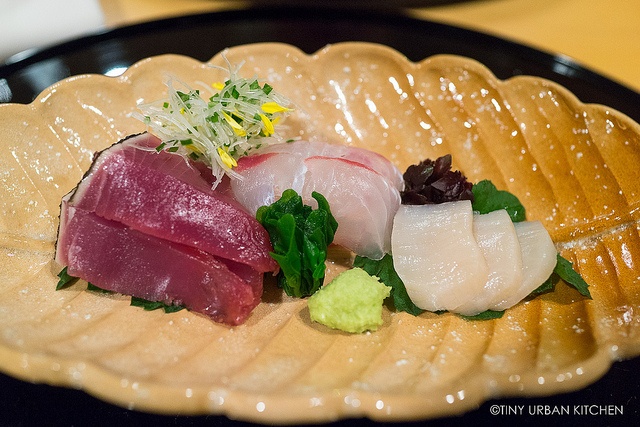
Next came a simple dish of sashimi. We had Bonito (skipjack tuna, one of my favorites), which we were supposed to dip in bonito flavored soy sauce. We also enjoyed Tai (red snapper), and Kobashira (scallops).
The quality of the fish was excellent and on par with high end sushi places.
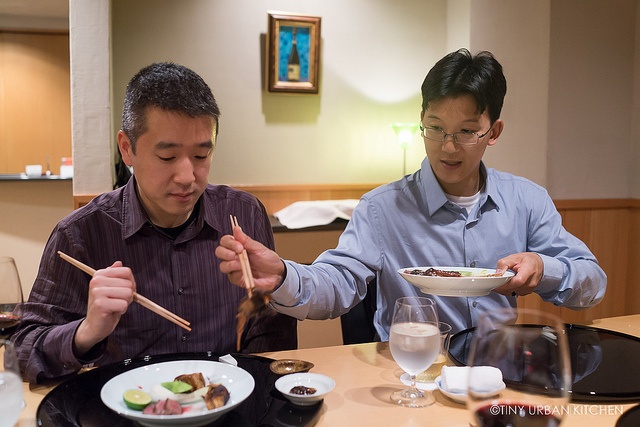
I mentioned earlier that we each ordered a different grilled item. The reason (of course) is that we all wanted to try as much as we could. It was fun to sample everyone else's grilled dishes.

Hee hee, here's a plate full of a small bite of everyone's food. All of the grilled items were fantastic and simply served with an endive leaf filled with a sweet soybean paste sauce, a cucumber slice, a few slices of pickled daikon, and citrus.
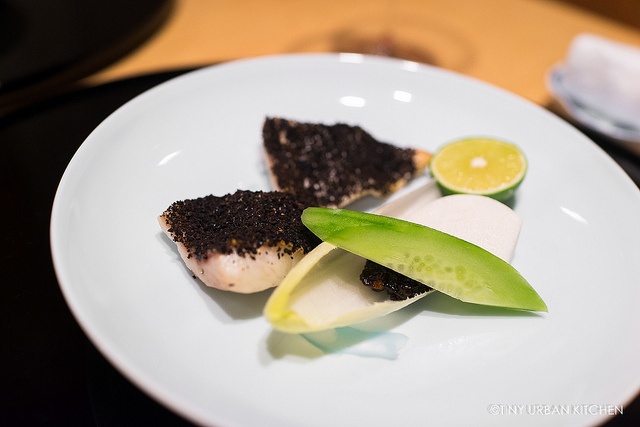
The Miso Fish was smoked with (I think) fermented tea leaves. The fish itself was super soft and tender yet had tons of flavor from both the miso and the smoked tea leaves.
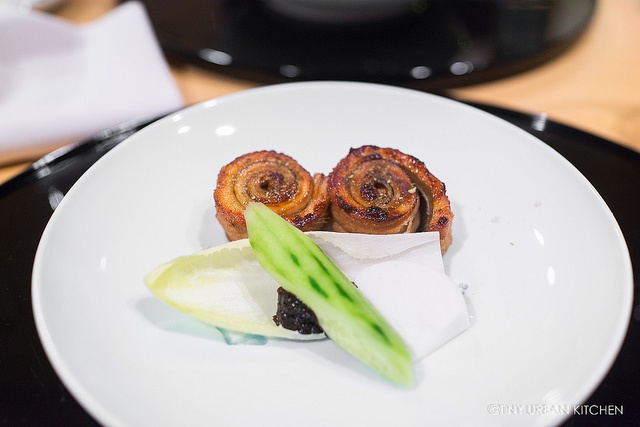
The Anago, or sea eel, was served rolled up to resemble whimsical cinnamon rolls. Although this was also very good, it did not stand out the way the other dishes did.
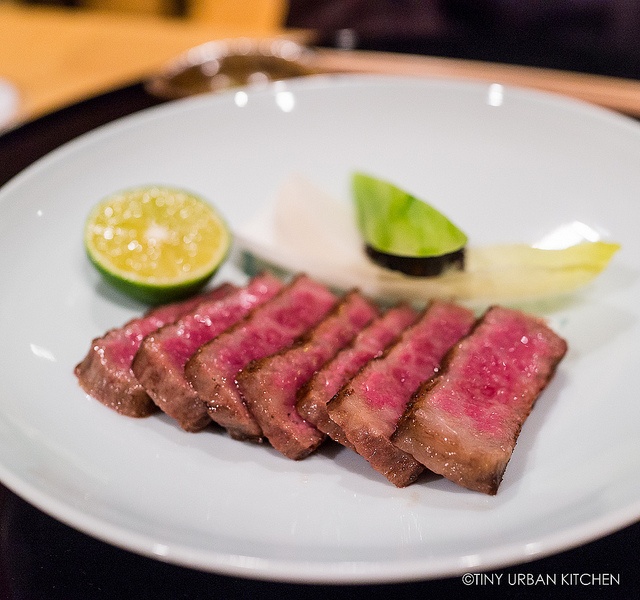
The locally sourced Wagyu Beef (I wish I could remember the region, but I cannot) was phenomenal. The steak was served with a honey sauce and Japanese pepper. Bryan happily ate the remaining pieces (after sharing one piece with each of us), stating that this was up there with the best steak he's ever had in his life.
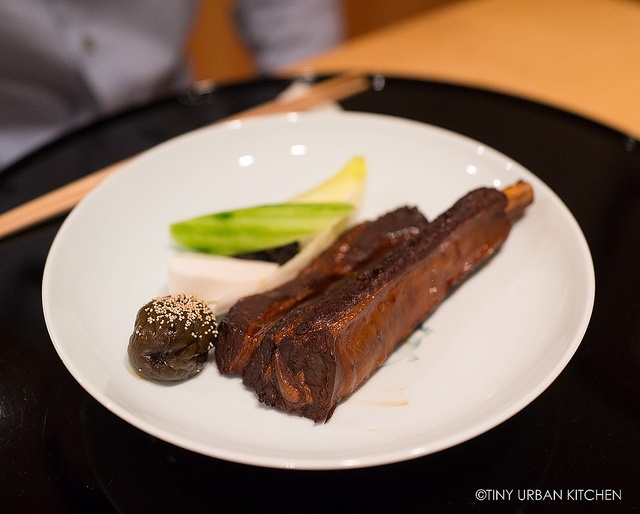
Their signature dish is the Red Wine Braised Pork Ribs, and it's worth the hype. These ribs were sweet, gorgeously fragrant, and so soft and tender we "cut" them with our chopsticks.
Once the grilled items came, we thought that the meal was pretty much over. I remember thinking that I was glad it was already over, since I was feeling perfectly satisfied but not stuffed yet (which is rare in a multi-course tasting menu).
Alas, we were very wrong about the fact that the tasting was over.
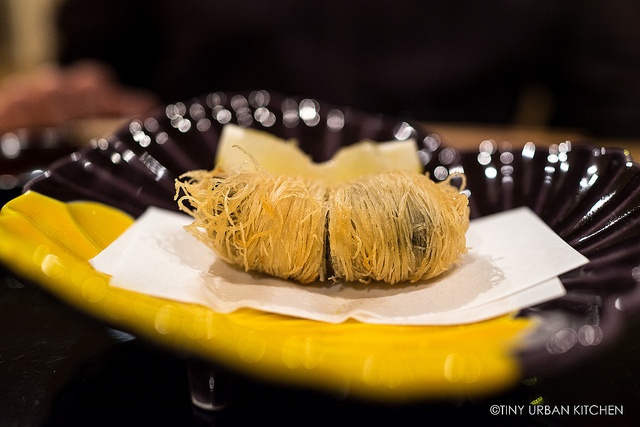
The next dish reminded me of Greek pastries such as baklava and the like. I thought, "is this dessert?"
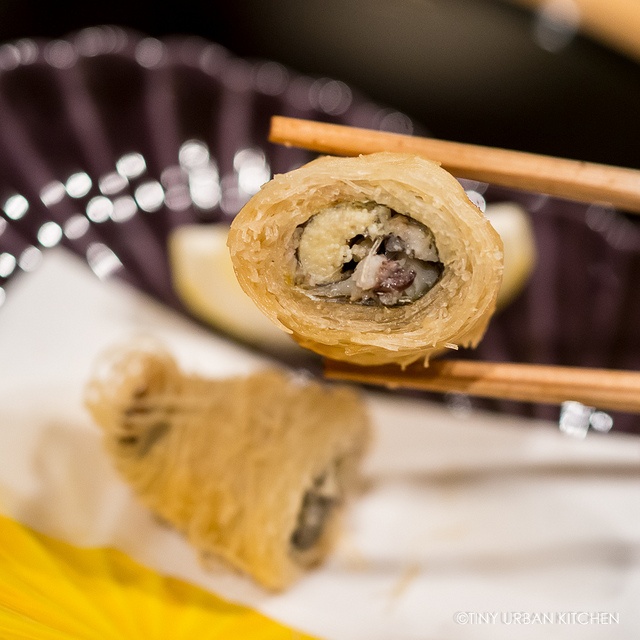
Nope.
The inside of the deep fried pastry shell was an ayu (sweetfish) full of eggs. We ate this with salt and lemon, which was the perfect, bright balance to the strong umami from the fish. The combination worked very well.
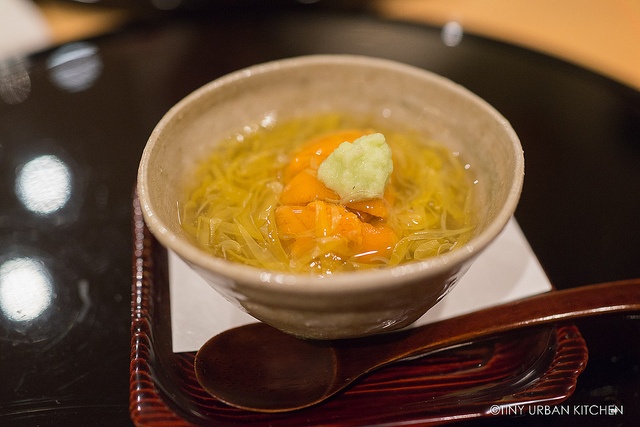 We then enjoyed a delicious, balanced flower petal soup filled with uni, tofu, and wasabi.
We then enjoyed a delicious, balanced flower petal soup filled with uni, tofu, and wasabi.
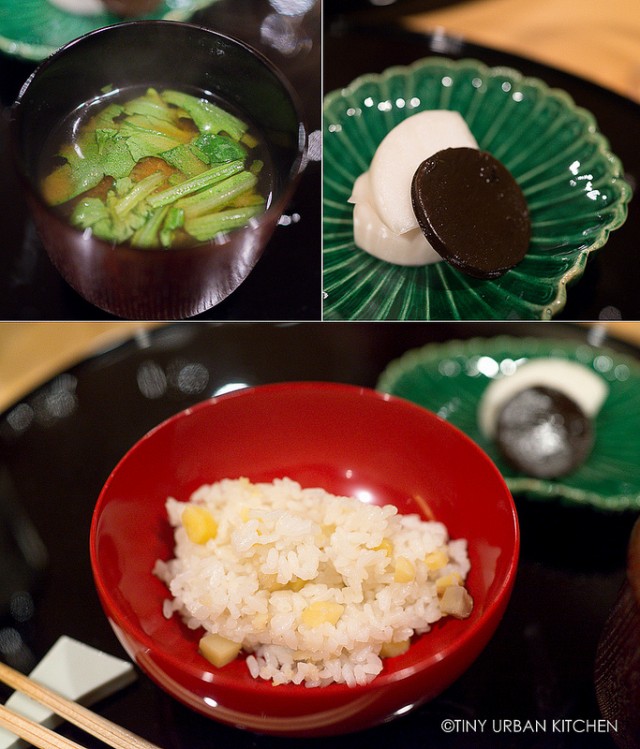
Many meals in Japan end with soup, rice, and pickles. In this case, our rice was interspersed with chestnuts. Our soup was a hot miso-based soup filled with a very herbal tasting vegetable. The pickles included daikon and this other black disc that I could not identify. It was very salty and reminded me a bit of olives.
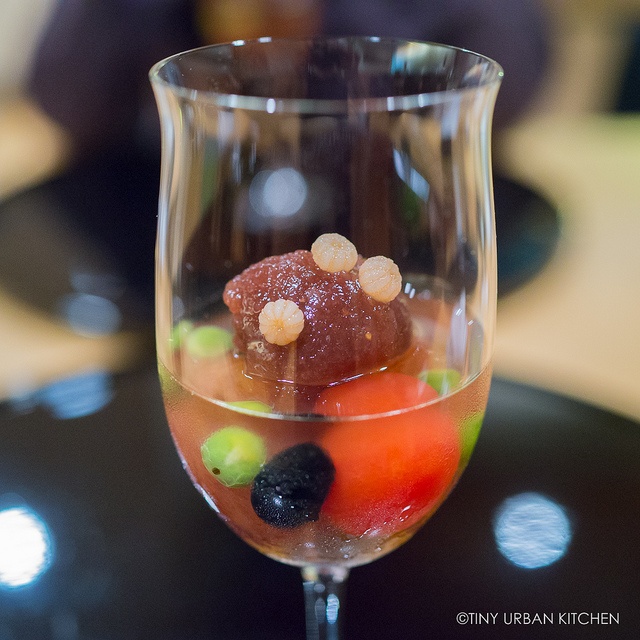
Finally, dessert was simple but refreshing. We each received a stem glass filled with gelatin and other unusual ingredients you may not associate with dessert, such as peas, tomato, large grapes, and black beans. All of the ingredients were excellent quality and overall the dessert was quite nice, though perhaps not particularly groundbreaking.
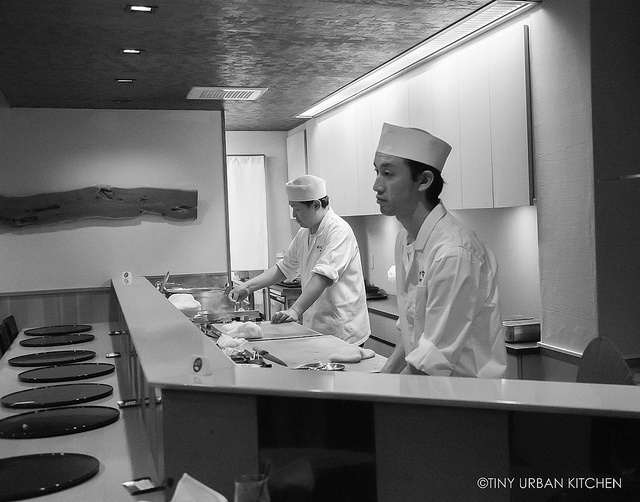
All in all, we had an extremely pleasant meal at Taian. The atmosphere is warm and pleasant, and not at all stuffy. In fact, it felt pretty laid back, which was nice. The service was great, and they really took great efforts to make us feel comfortable.
Overall the food was excellent. I really enjoyed all the unusual and locally inspired bites at the beginning of the meal. Everything from the seafood to the grilled meats were top notch, and soups were complex, balanced, and excellent as well. Honestly, it's really hard to get a three-star Michelin meal for just a hair over $100 USD these days. There are A LOT of mediocre restaurants that charge in this range, if not more. If nothing else, this is by far the best 3-star Michelin value I have ever seen. Most 3-star Michelin meals run closer to the range of $200-$300 a person. $105 is really a steal, especially considering the quality and variety of unusual and expensive ingredients they use.
Chef Hitoshi Takahata, who opened this restaurant in 2000, is still excelling at what he originally set out to do:
"prepared dishes that leave an impression."
He has undoubtedly done that for us.
All Rights Reserved










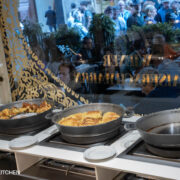
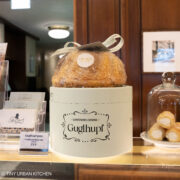
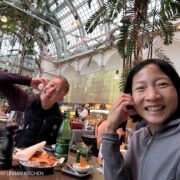
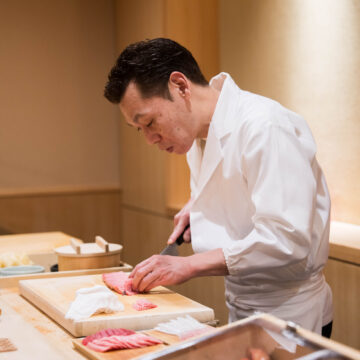
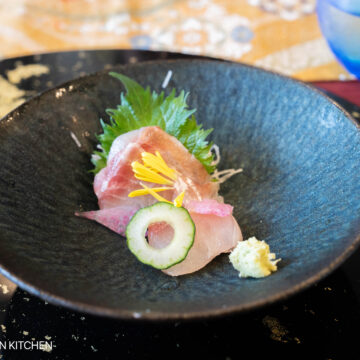
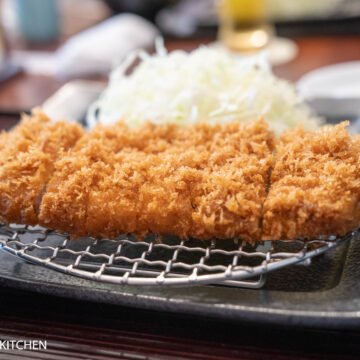
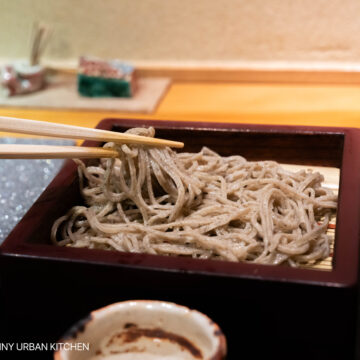
[…] it together somewhere. Certain years, we’ll actually go on a trip (e.g., Paris, Sydney, or Tokyo), while other years we’ll just explore Boston together for the […]